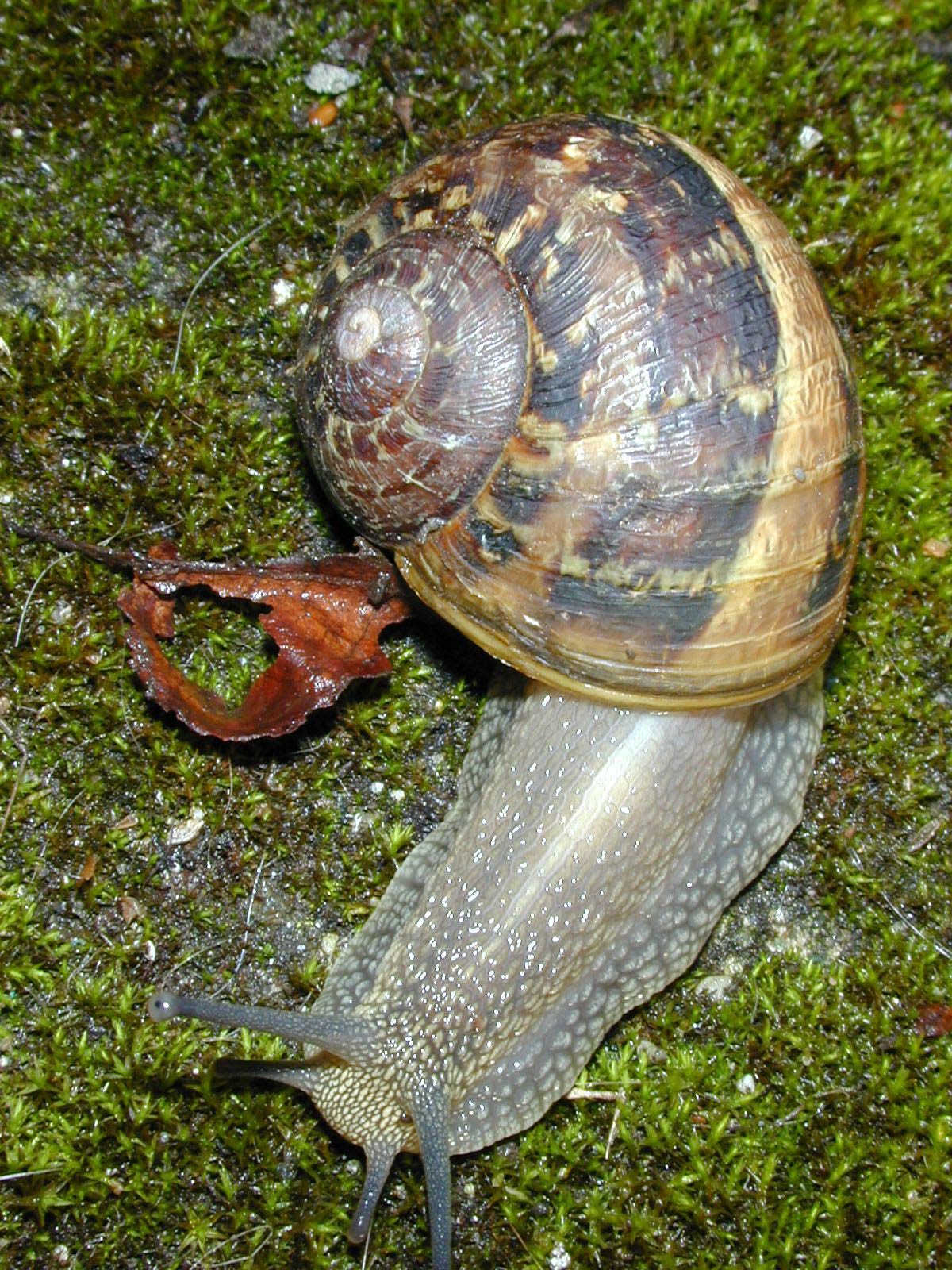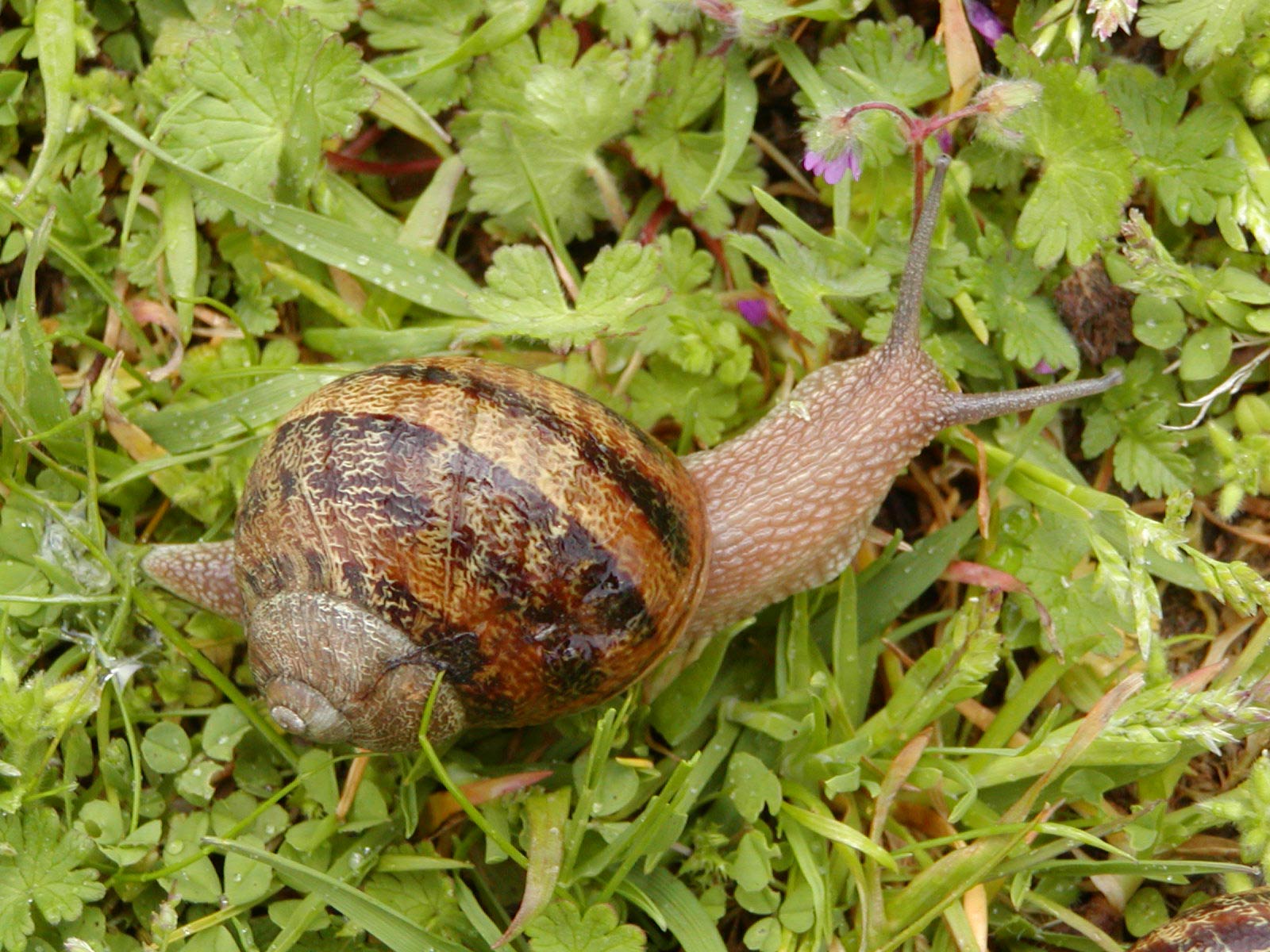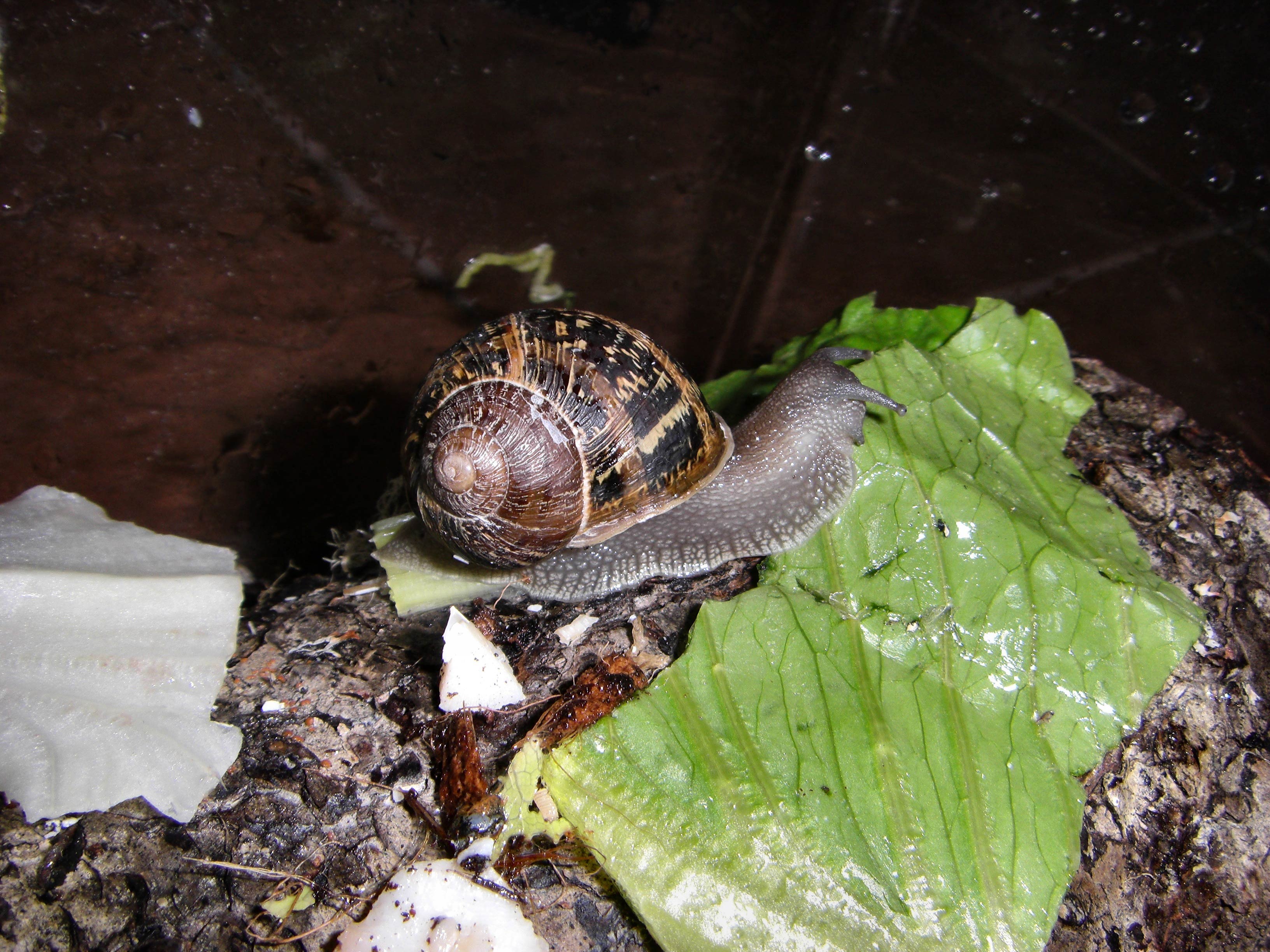Cornu aspersum
|
Cornu aspersum. note yellow tubercles on the body of the animal. (Photo: © R. Forsyth, Smithers, BC, Canada) |
|
Cornu aspersum. (Photo: © Dr. Roy Anderson, MolluscIreland) |
|
Cornu aspersum. (Photo: © Wikipedia) |
|
Cornu aspersum. (Photo: © Dfruzzetti, Wikipedia) |
|
Cornu aspersum: aggregated on a wall. (Photo: © D. Medcalf, Wikipedia) |
Family
Helicidae
Species
Cornu aspersum (Muller, 1774)
Common name
Brown garden snail, Common snail, Garden snail
Description
Cornu aspersum is a moderately sized snail with a heliciform shellShell:
A hard, inflexible, calcareous or chitinous structure that vary in size and may either completely encasing the animal, covering some part of it or be internal.
ranging in heightHeight:
The height of the shell is a measure of the distance between the apex and the most basal part of the shell OR the measurement taken from the apex of the shell to the base, when measured parallel to the axis of the shell.
from 20-35 mm and widthWidth:
The width of the shell is the maximum distance across the shell (including the aperture).
from 25-40 mm (rarely 45 mm). The shellShell:
A hard, inflexible, calcareous or chitinous structure that vary in size and may either completely encasing the animal, covering some part of it or be internal.
is yellow-brown and may possess darker brown spiralSpiral:
Directional term: direction of the coils of the whorls of a shell; opposite of axial.
stripes interrupted by lighter, irregular markings and streaks, creating a banded appearance. There are irregular dimples on the shellShell:
A hard, inflexible, calcareous or chitinous structure that vary in size and may either completely encasing the animal, covering some part of it or be internal.
. There are 4 1/2 to 5 whorlsWhorls:
Pleural of whorl. A whorl is a complete spiral turn/growth of the shell of a mollusc. The whorls are counted from the apex outwards.
. The apertureAperture:
The major opening of a shell that the body of the animal may be retracted.
(mouth) is large and rounded and has a lipLip:
The margin of the aperture, which may be sharp or thickened depending upon the species (Also see apertural lip).
that is white, faintly thickened and slightly recurvedRecurved:
To curve back at the tip of the shell's lip. (See also reflected)
. In adults of this species, the umbilicusUmbilicus:
A navel-like indentation or depression in the center of the shell. It may be described as open (inside of columella visible), partially closed (partly covered by base of aperture) or completely closed (not visible). The width of the umbilicus is a measure of its greatest diameter.
is normally absent or closed, though it may open to form a narrow slit in rare cases. The body of the animal is grey to pale brown-ochre and the tuberclesTubercles:
An enlarged or raised region on the body of a slug. The shape of this structure is very variable. (See also tubercle)
are yellow. The mantleMantle:
A fleshy, membranous covering of the anterior portion of the body of a mollusc. It secretes the materials that form the shell.
is somewhat black and speckled with grey-yellow.
Note: The surface sculpturing of the shellShell:
A hard, inflexible, calcareous or chitinous structure that vary in size and may either completely encasing the animal, covering some part of it or be internal.
can be used to distinguish between Helix spp. and Cornu aspersum. The shellShell:
A hard, inflexible, calcareous or chitinous structure that vary in size and may either completely encasing the animal, covering some part of it or be internal.
of Cornu aspersum is characteristically wrinkled, while the shellShell:
A hard, inflexible, calcareous or chitinous structure that vary in size and may either completely encasing the animal, covering some part of it or be internal.
surface of Helix species lack wrinkles.
Native range
Mediterranean region and Western Europe
Distribution
North America:
- U.S.: East and West Coast of the U.S., Southeastern States except Florida
- Canada: West Coast
South and Central America: Mexico, Chile, Argentina
Caribbean: Haiti
Pacific Islands: Hawaiian Islands
Atlantic Islands
Australasia: Australia, New Zealand
Asia
South Africa
Europe
Other: western Mediterranean region
Ecology
This edible snail lives in gardens and along roadsides and consumes both living and dead plant material. This species is recorded as a pest of citrus in California. In many parts of the world, C. aspersum attacks vegetables (carrot, cabbage, lettuce, onion, tomato), cereals (oats, wheat, barley), flowers (sweet-pea, lilies, carnation, aster, pansy), ornamental (California boxwood, hibiscus, rose) and fruit trees (peach, plum, apple, apricot). The garden snail can lay as many as 80 eggs per clutch. The juveniles of this species will achieve maturity in 1-2 years. Longevity is approximately 5 years.
Synonyms
- Helix aspersa Muller, 1774
- Cantareus aspersus (Muller)
- Cryptomphalus aspersus (Muller)
References
Anderson 2005Anderson 2005:
Anderson, R. 2005. An annotated list of the non-marine Mollusca of Britain and Ireland. Journal of Conchology 38: 607-637.; Boycott 1934; Cowie 2000Cowie 2000:
Cowie, R.H. 2000. Non-indigenous land and freshwater mollusc in the islands of the Pacific: conservation impacts and threats. In: Invasive species in the Pacific: A technical review and draft regional strategy. Southern Pacific Regional Environment Programme. Australia.; Cowie et al. 2008Cowie et al. 2008:
Cowie, R.H., K.A. Hayes, C.T. Chuong, T.Tran and W.M. Meyer III. 2008. The horticultural industry as a vector of alien snails and slugs: widespread invasions in Hawaii. International Journal of Pest Management 54(4): 267-276.; Cowie et al. 2009; Forsyth 2004Forsyth 2004:
Forsyth, R.G. 2004. Royal BC museum handbook: land snails of British Columbia. Victoria, Canada: Royal BC Museum. pp. 1-188.; Kerney et al. 1979Kerney et al. 1979:
Kerney, M.P., R.A.D. Cameron and G. Riley. 1979. A field guide to the land snails of Britain and North-west Europe. Collins, London. pp. 288.






